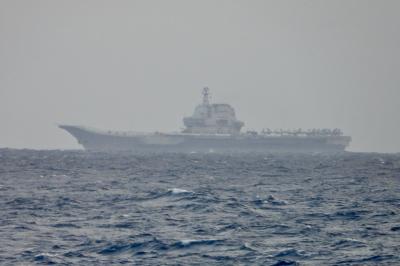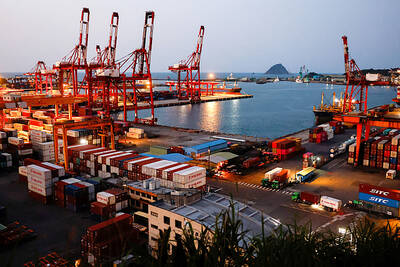The Ministry of Education (MOE) has caused a stir with its recent directive that elementary and junior high schools teach that the disputed Diaoyutai Islands (釣魚台) “have been a part of China since ancient times,” and consequently belong to the Republic of China (ROC).
Critics called it “brain-washing under the guise of education.”
Huang Chi-teng (黃子騰), head of the ministry’s Department of Elementary Education, said the directive was sent after an interministerial meeting convened by the National Security Council (NSC), in which it was decided that the ministry would give schools a paper for use as reference in teaching “the relations between the Diaoyutai Islands and Taiwan.”
The paper, which includes comments such as “Japan stole the Diaoyutai Islands,” places China and Taiwan on the same side opposing Japan, using the claim that “the Diaoyutai Islands have belonged to China in the past” to argue that sovereignty over the Diaoyutais belongs to the ROC.
Huang said the paper was prepared by the council and that he had not looked closely at the content. He said the council could legally require that the ministry participate in the process, as the decision was reached during an interministerial meeting.
The council wrote the paper in May. In June, the Ministry of Foreign Affairs held a seminar on “the proper use of data concerning our claims on the Diaoyutai Islands” and sent a record of the meeting to all concerned government agencies.
Yang Kuo-tung (楊國棟), director-general of the ministry’s Department of Treaty and Legal Affairs, said the meeting was held primarily to discuss how to promote awareness of the Diaoyutai issue among elementary and junior-high school students.
The issue concerns whether “our national territory is intact,” Yang said, adding that it was a matter that concerns the public and one that it must face.
The Ministry of Education issued a decree on July 18 directing all elementary and junior-high schools to incorporate the NSC paper and teach students that the Daioyutai Islands has, since ancient times, been a part of China. It also directed schools to hold events to promote awareness of the issue and report their progress to the council.
Commenting on the matter, National Teachers’ Union secretary-general Wu Chung-tai (吳忠泰) said that any government paper relating to course material or course scheduling should first be submitted to the course syllabus committee and educational organizations should be invited to take part in negotiations and discussions.
The NSC should not have handled the matter in a top-down manner, giving the information to the education ministry and telling it to incorporate it into the curriculum, Wu said.
He said that as sovereignty over the Diaoyutais remains a sensitive issue — both domestically and internationally — the timing of the government’s announcement of such a policy gives educational organizations reason to doubt the motives of President Ma Ying-jeou’s (馬英九) administration.
There are varied views in the nation concerning the Diaoyutai issue, National Alliance of Parents Organization head Gordon Hsieh (謝國清) said, adding that education should not become a tool for government propaganda.
Chiang Huang-chih (姜皇池), a professor of international law at National Taiwan University’s College of Law, also expressed doubts about the decision, saying the NSC paper presents a great risk in terms of international law, because it places Taiwan’s claims under the scope of it being a part of China.
The council’s proposition would relegate both Taiwan and the Diaoyutai Islands to being parts of China, Chiang said.
Democratic Progressive Party (DPP) Legislator Kuan Bi-ling (管碧玲) accused the Ministry of Education of employing Martial Law-era tactics by putting education under political control, with the NSC bypassing normal educational channels to teach students its own pre-customized ideologies.
Taiwan Solidarity Union Chairman Huang Kun-huei (黃昆輝) accused the council of being the force behind a government though-control scheme and propaganda machine.
“Whether the Diaoyutais are the territory of Taiwan, China or Japan is a question for historians to solve. The security council cannot decide the final outcome on its own,” Huang said.
Huang urged the Ma administration to respect the independence of the education system and to stop interfering with the school curriculum.
DPP Legislator Tsai Huang-liang (蔡煌瑯) said both the Ministry of Foreign Affairs and the council had gotten their priorities wrong.
Instead of trying to expand the nation’s international relations, they were conducting “united front” (統戰) propaganda aimed at Taiwanese elementary and junior-high school children, Tsai said.
Additional reporting by Chris Wang and Hu Ching-hui
Translated by Jake Chung, Staff Writer

US President Donald Trump yesterday announced sweeping "reciprocal tariffs" on US trading partners, including a 32 percent tax on goods from Taiwan that is set to take effect on Wednesday. At a Rose Garden event, Trump declared a 10 percent baseline tax on imports from all countries, with the White House saying it would take effect on Saturday. Countries with larger trade surpluses with the US would face higher duties beginning on Wednesday, including Taiwan (32 percent), China (34 percent), Japan (24 percent), South Korea (25 percent), Vietnam (46 percent) and Thailand (36 percent). Canada and Mexico, the two largest US trading

China's military today said it began joint army, navy and rocket force exercises around Taiwan to "serve as a stern warning and powerful deterrent against Taiwanese independence," calling President William Lai (賴清德) a "parasite." The exercises come after Lai called Beijing a "foreign hostile force" last month. More than 10 Chinese military ships approached close to Taiwan's 24 nautical mile (44.4km) contiguous zone this morning and Taiwan sent its own warships to respond, two senior Taiwanese officials said. Taiwan has not yet detected any live fire by the Chinese military so far, one of the officials said. The drills took place after US Secretary

CHIP EXCEPTION: An official said that an exception for Taiwanese semiconductors would have a limited effect, as most are packaged in third nations before being sold The Executive Yuan yesterday decried US President Donald Trump’s 32 percent tariff on Taiwanese goods announced hours earlier as “unfair,” saying it would lodge a representation with Washington. The Cabinet in a statement described the pledged US tariffs, expected to take effect on Wednesday next week, as “deeply unreasonable” and “highly regrettable.” Cabinet spokeswoman Michelle Lee (李慧芝) said that the government would “lodge a solemn representation” with the US Trade Representative and continue negotiating with Washington to “ensure the interests of our nation and industries.” Trump at a news conference in Washington on Wednesday announced a 10 percent baseline tariff on most goods

THUGGISH BEHAVIOR: Encouraging people to report independence supporters is another intimidation tactic that threatens cross-strait peace, the state department said China setting up an online system for reporting “Taiwanese independence” advocates is an “irresponsible and reprehensible” act, a US government spokesperson said on Friday. “China’s call for private individuals to report on alleged ‘persecution or suppression’ by supposed ‘Taiwan independence henchmen and accomplices’ is irresponsible and reprehensible,” an unnamed US Department of State spokesperson told the Central News Agency in an e-mail. The move is part of Beijing’s “intimidation campaign” against Taiwan and its supporters, and is “threatening free speech around the world, destabilizing the Indo-Pacific region, and deliberately eroding the cross-strait status quo,” the spokesperson said. The Chinese Communist Party’s “threats